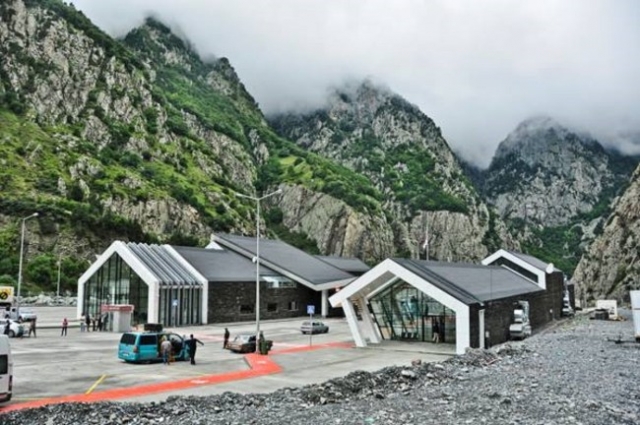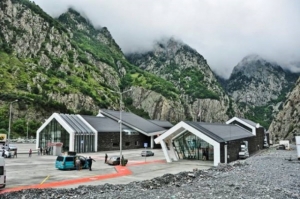Russia–Georgia Trade Corridor Agreement Moving Forward
An agreement to create three trade corridors between Russia and Georgia, including through Abkhazia and South Ossetia, is to move forward, according to Russian Deputy Foreign Minister Grigory Karasin. Karasin met with the Georgian PM’s Special Representative to Russia, Zurab Abashidze, on Thursday in Prague.
The pair discussed the implementation of a 2011 deal on customs monitoring, among other issues, which was a precondition for Georgia giving the green-light to Russia’s World Trade Organisation membership that year.
Following the meeting, Karasin said they had ‘reached the important decision to continue negotiations. "We are interested in implementing the 2011 agreement," he added. The latest Abashidze–Karasin meeting followed separate agreements signed by the Georgian and Russian governments with Swiss company SGS to monitor goods travelling through the three corridors.
According to the 2011 agreement, SGS is to be a third, neutral party monitoring cross-border cargo traffic and will be responsible for collecting and sharing information about goods crossing the border.
The three corridors are to be the Kazbegi–Zemo Larsi border crossing, part of the Tbilisi–Vladikavkaz highway and the only Russia-Georgia crossing under Georgia’s control, as well as through Abkhazia and South Ossetia. The agreement said the Abkhazian corridor goes from the ‘Abkhazian section of the Georgian–Russian border’ and passes through the ports of Sukhumi and Ochamchire and the entire Abkhazian shoreline, ending in Zugdidi, the administrative centre of western Georgia’s Samegrelo–Zemo Svaneti Region. The third corridor would run from Gori along the Transcaucasian Highway connecting South Ossetia with Russia’s North Ossetia via the Roki tunnel.
Apart from collecting information on goods crossing the border, SGS would also be able to track cargo movement with GPS technology via electronic seals attached to vehicles passing through the terminals. Consequently, if implemented, Georgia would have access to information about goods entering from Russia into territories it has not controlled since the early 1990s.
There had been no reports of moves to implement the deal until the Georgian and Russian governments signed separate bilateral deals with SGS on 19 December 2017 and 18 May 2018 respectively.
Speaking to MPs the day after Georgia signed the agreement with SGS, Prime Minister Giorgi Kvirikashvili insisted it was "not against the interests of the [Georgian] state" and that the "Tskhinvali direction will be open only when there is a force majeure situation at the Larsi checkpoint," and would be available to Turkey and Armenia, and "other countries" during weather crises. This condition for the use of the South Ossetian corridor was one of the few provisions of the agreement with the SGS publicly available, as most of the agreement has remained under wraps.
The possibility of Armenia using the route triggered harsh criticism in Azerbaijan’s parliament in December 2017, with speaker Ogtay Asadov saying "someone probably wants to break this [Azerbaijani–Georgian] alliance."
Azerbaijani political scientist Tofig Abbasov has been quoted as saying that by considering opening the South Ossetia corridor to Armenia, Tbilisi "is playing a double-headed game" which might harm the country’s relations with Azerbaijan — cooperation that enables Georgia to "increase revenues and participate in large-scale projects," he says.
Transit of foreign goods via territories not controlled by Georgian authorities is prohibited by the 2008 Georgian Law on Occupied Territories. At present, goods are transported between Armenia and Russia only through the Kazbegi–Zemo Larsi route, which is frequently blocked by snowfall.
By Shawn Wayne











